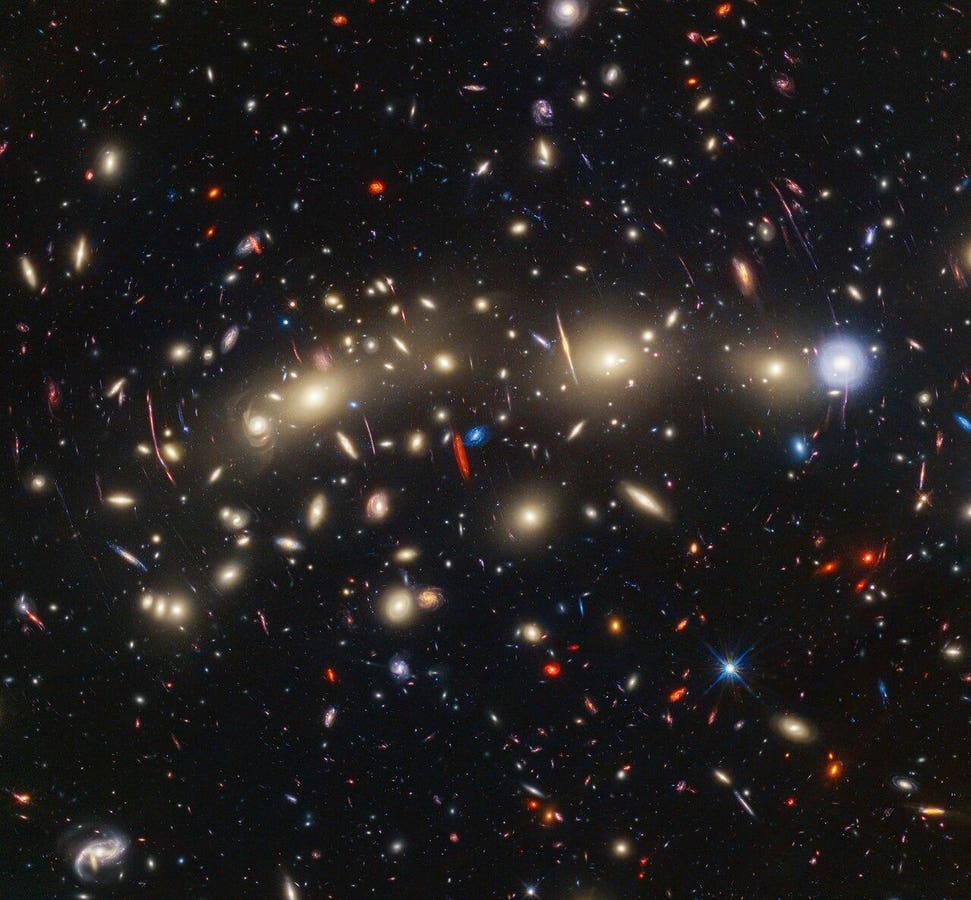Data from the two most famous space telescopes—Hubble and James Webb—have been combined to produce an epic image of two massive clusters of remote galaxies colliding in space and time.
While the Hubble Space Telescope sees largely in visible light, the James Webb Space Telescope sees in infrared—a wavelength of light invisible to humans and not easily detected from behind Earth’s atmosphere.
Largest Objects In The Universe
Merging data from the two using filters has created this stunning panoramic image of an expansive galaxy cluster known as MACS0416. A galaxy cluster is any number of galaxies that are gravitationally bound to each other, according to NASA. Theye are the largest objects in the known Universe.
The stunning new image can be explored online as a zoomable image and downloaded freely by anyone in 4,457 x 4,133 resolution—about 18 megapixels.
That’s despite MACS0416 being a whopping 4.3 billion light-years from the solar system.
Christmas Tree Galaxy Cluster
“We’re calling MACS0416 the Christmas Tree Galaxy Cluster, both because it’s so colorful and because of these flickering lights we find within it,” said Haojing Yan of the University of Missouri in Columbia, lead author of one paper describing the scientific results. “We can see transients everywhere.” Transients are objects varying in observed brightness over time.
The data from both telescopes produced two separate papers, one published today in the The Astrophysical Journal and the other published today in the Astronomy & Astrophysics.
Comprehensive Views
The merged image is one of the most comprehensive views of the universe ever taken, according to NASA. As well as imaging MACS0416 the image shows hundreds of completely unrelated galaxies in the background.
It also shows small stretched lines. These are evidence of gravitational lensing whereby the gravitational field of a foreground object is so intense that it distorts the space around it. It bends the light from an object behind it into circular rings, both reveal the object’s existence and magnifying it. It’s also known as an “Einstein Ring” or “cosmic magnifying glass.”
Gravitational lensing is an increasingly useful way of finding and studying incredibly distant objects.
Hubble’s Legacy
“We are building on Hubble’s legacy by pushing to greater distances and fainter objects,” said Rogier Windhorst of Arizona State University, principal investigator of the PEARLS program (Prime Extragalactic Areas for Reionization and Lensing Science), which took the JSWT observation. “The whole picture doesn’t become clear until you combine Webb data with Hubble data.”
Wishing you clear skies and wide eyes.
Read the full article here





